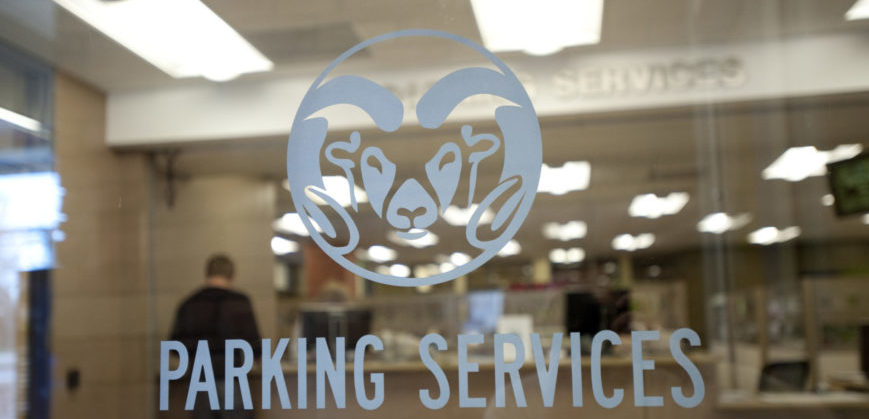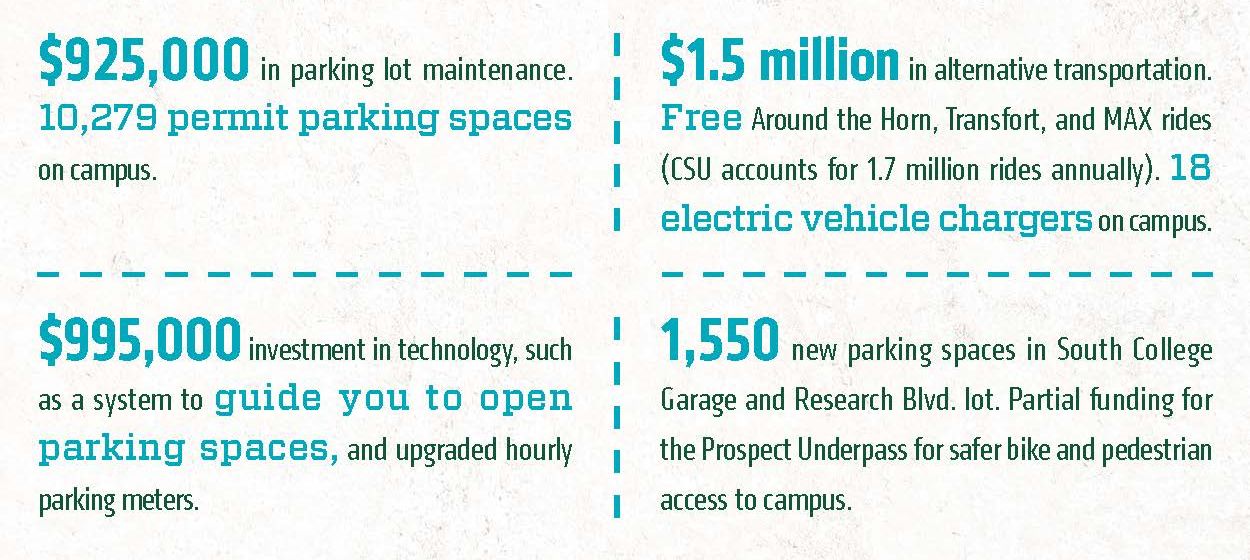
Parking on campus may be a popular topic of discussion, but it’s not often a celebrated one. While it may seem straightforward – what commuter doesn’t want to just pull into a free parking space close to their destination? – it’s a confounding soup of demand, supply, funding models, parking models, car counts, proximity, access, consultant studies, permit fee rates, enforcement, campus land-use planning, and best industry practices.
Determining how the future of parking looks on campus is not a simple task. And soon, students and employees will be asked to weigh in.
Lynn Johnson, Colorado State’s vice president for operations, has been making sense of the complexities of parking at CSU, and helping evaluate how parking might change to accommodate campus growth. Later this fall, the Center for Public Deliberation and the Parking Services Committee will present several options to campus for consideration.
“It’s a fact that the university is moving parking to the edges of campus,” Johnson said. “We know that will create frustration. To help find solutions, though, we’ve taken a deep look at how to be strategic about parking on campus, and we’ve been very diligent in all steps of research and evaluation.”
Decades of planning
To know what the future looks like, it’s important to understand the past. While it may appear that the journey started with the Parking and Transportation Master Plan, written in 2013 to complement the University Master Plan, it’s really a decades-old story. The university’s master plan, Johnson points out, has called for parking to be pushed to the perimeter of campus to increase the safety of pedestrians and bicyclists on campus — since the 1970s.
Added to those plans is an all-encompassing amount of information in the three years since the master plan was developed, gathered after the university investigated the option of a long-term lease with a private parking firm.
While that was a direction the university decided not to take, it was the impetus for an extensive monetization study which included a deep dive into parking at CSU by three separate, leading consulting firms.
All of this information informs today’s discussion about parking: how to organize and charge for the university’s 10,000 parking spaces in an environment where there is an increasing mismatch of growth and supply, as well as how people come into campus and ideal locations for future parking lots and garages.
Then, factor into the complexity of the puzzle that providing parking on campus is costly and, because of state statute requirements, parking must pay for itself, Johnson said. It cannot be supplemented by tuition, fees or state revenue. To address that imbalance, the university has shifted to strategies to offset the need for parking on campus, such as encouraging the use of alternative transportation by providing free transit passes to all employees and students, and investing in bike and pedestrian infrastructure and programs such as carpooling.
Where do your parking permit dollars go?

Competing interests make solution complex
“We are looking at all opportunities and options,” Johnson said. “There are many competing interests when considering parking on campus; some people are willing to pay whatever they need to pay to park next to their building, and others are sensitive to price.
“Unfortunately, we cannot meet everyone’s needs and desires, but what we can do is work to reduce their frustration by looking at options: Will what we’ve always done still work in the future? How can we continue to make parking on campus a valuable asset to our employees, students and guests? What can we do to minimize the need to park on campus, and support other ways to get here? And we need to answer all of these questions while still paying the bill for parking on campus.”
That’s the task that Parking and Transportation Services and the Parking Services Committee — which includes representatives from ASCSU, employee councils and various departments across campus — have been tackling for the last year. In a few months, they’ll seek campus feedback on several parking models that are still in development. Options for providing input will be announced to campus in the coming weeks.
“It’s important to note that we’ve contracted with the best individuals in the parking industry, who are the most knowledgeable people on parking and university parking across the United States, and they’re working on helping us determine our next steps,” Johnson said.